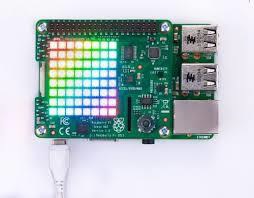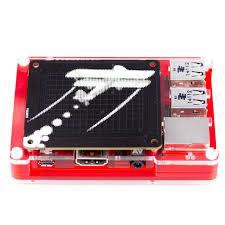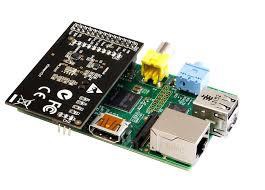
- Raspberry Pi - Home
- Raspberry Pi - Introduction
- Raspberry Pi - Getting Started
- Raspberry Pi - Operating System
- Connecting Raspberry Pi
- Raspberry Pi - Configuration
- Raspberry Pi - Working with Linux
- PIXEL Desktop Environment
- Raspberry Pi - Linux Shell
- Raspberry Pi - Managing Software
- Raspberry Pi - GPIO Connector
- Raspberry Pi - Add-on Boards
- Third-party Software Package
- Raspberry Pi Useful Resources
- Raspberry Pi - Quick Guide
- Raspberry Pi - Useful Resources
- Raspberry Pi - Discussion
Raspberry Pi - Add-on Boards
There are ready-made boards with all sorts of components built on. Many companies have produced such boards. Such boards come with sample code to show us how to use them.
Types of ready-made boards
We have two types of ready-made boards, Raspberry Pi, which are as follows −
The boards which are designed for making it easy to get access to the GPIO pins.
The boards with components that have already soldered up.
Styles of Ready-made Boards
The ready-made boards come in following three styles −
Separate boards
These kinds of ready-made boards connect to the GPIO pins via a ribbon cable or your own wires.
Shield or plates
These kinds of ready-made boards plug into all the GPIO pins and cover most of the area of the Raspberry Pi board.
HATs (Hardware Attached on Top)
These kinds of ready-made boards are like the shields or plates but contain an additional identification. Sometimes, it may contain a software so that the Raspberry Pi can read what they are on start-up and install some software and prepare GPIO pins automatically.
Various Boards
Since the introduction of the Raspberry Pi computer, new boards are constantly being developed and produced.
Some of the boards are as follows −
The Sense HAT
The Sense HAT, specifically designed for the Astro-Pi mission, allows Raspberry Pi to sense the world around it. Two ruggedized versions of Sense HAT were flown on the International Space Station from December 2015. The codes for both the versions were written by school children.
Following are some of the characteristics of the Sense HAT board −
It has a 8X8 RGB LED matrix.
It has a 5-button joystick.
It also has sensors to measure acceleration, temperature, pressure, humidity, and magnetism.
It also has sensors to measure the gyroscope.
It has an extensive Python library associated with it. This Python library allows for easy access to this board.
The comprehensive coverage of using the Sense HAT can be found at https://projects.raspberrypi.org/en/projects/getting-started-with-the-sense-hat.

The Skywriter HAT
The Skywriter HAT is an electric near-field 3D proximity interface, which senses things floating in the air over it.
Some of the characteristics of the skywriter HAT are as follows −
You can make gestures with your hands because it can detect the motion of your hand with X, Y and Z positions.
It can detect gestures such as flicks right, left, up, and down.
It can easily detect the circular motion of the finger.
It can also detect the taps directly to its surface.
The range of the skywriter HAT has a range of about 5 cms.
It can also be mounted behind any non-conducting surface.

The source of the above image is www.magpi.raspberrypi.org
The Xtrinsic Sense Board
The Xtrinsic Sense Board, made in partnership with the component distributors and Raspberry Pi co-manufacturer Farnell, is a low-cost sensor board. It is somewhat like the Sensor HAT, but without LEDs.
Some of the characteristics of the Xtrinsic Sense Board are as follows −
It contains a high-precision pressure sensor. The range of this sensor is 50 to 110 kPa.
It also contains a 3-axis digital accelerometer and a 3-D magnetometer.

The source of the above image is www.farnell.com